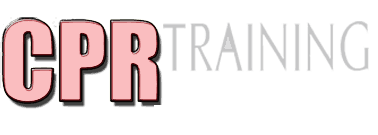The Chain of Survival is about a series of critical interventions, coordinated roles and responsibilities that can help improve chances of survival and recovery
The Chain of Survival is a metaphor for the elements of the Emergency Cardiovascular Care (ECC) systems concept. It is a series of critical interventions, coordinated roles and responsibilities. A strong and efficient chain of survival can help improve chances of survival and recovery. It is composed of four links that include: early access, early cardiopulmonary resuscitation (CPR), early defibrillation, and early advanced care. The Chain of Survival is used for sudden cardiac arrest, heart attack, stroke, and other medical emergencies. In communities with a strong Chain of Survival, survival rates can go to as high as 30%. A strong chain of survival does not just involve emergency services personnel, paramedics, doctors and nurses, rather, it can also involve bystanders, dispatchers, and first aiders.
Pre-Chain of Survival
The modern lifestyle of many individuals from many different cultures make cardiac arrest and other medical emergencies the number killer in many societies. Changes in lifestyle can greatly reduce an individual’s chances of developing heart problems, including cardiac arrest. The following are some of the pre-chain of survival tips:
- Making healthy choices
- Eat a healthy, nutritious, well-balanced diet.
- Stop smoking cigarettes and other tobacco products.
- Drink alcohol in moderation. Avoid drinking more than one to two drinks a day.
- Stay physically active by maintaining a regular exercise schedule.
- Early recognition of signs and symptoms of heart diseases, strokes, illnesses and injuries
- Learn to recognize crucial signs and symptoms of potential medical emergencies.
Chain of Survival
The Chain of Survival is composed of four links that if done efficiently increase chances of survival.
- Early Access
- Main goal: to get help
- Simply call the emergency medical services (EMS) by calling the local emergency number to bring trained professionals to the scene
- Early CPR
- Main goal: to buy time
- Initiate CPR as soon as possible on an unresponsive person, has no normal breathing, no visible signs of circulation and no pulse
- Can be done by anyone (bystander, first aiders, etc.) to supply oxygen to the crucial organs until the arrival of trained professionals
- Early Defibrillation
- Main goal: to restart the heart
- Should only be done by a trained professional to give shocks to the heart
- For every minute without CPR, the victim’s chance of survival will decrease by 7-10%
- Early Advanced Care
- Main goal: to stabilize
- Given by the trained professionals either on the way to the hospital or at the hospital
Post-Chain of Survival
After doing the chain of survival on a victim who survived cardiac arrest, early rehabilitation can greatly help the victim normalize after undergoing a medical emergency. Some of the post-chain survival tips include:
- Early rehabilitation
- To assist the victim, caregivers and family face new challenges
- Assist the survivor to return to a productive life in the community
Disclaimer: This article does not provide medical advice. The information given should not be substituted for formal training. Seek medical attention when necessary. It is important to recognize medical emergencies at all times to avoid complications from developing. Take a first aid and / or CPR course with workplace approved providers to learn more about the Chain of Survival.
Online Sources:
http://www.laerdal.com/docid/6681890/The-Chain-of-Survival
https://resuscitation.heartandstroke.ca/guidelines/chain_of_survival
